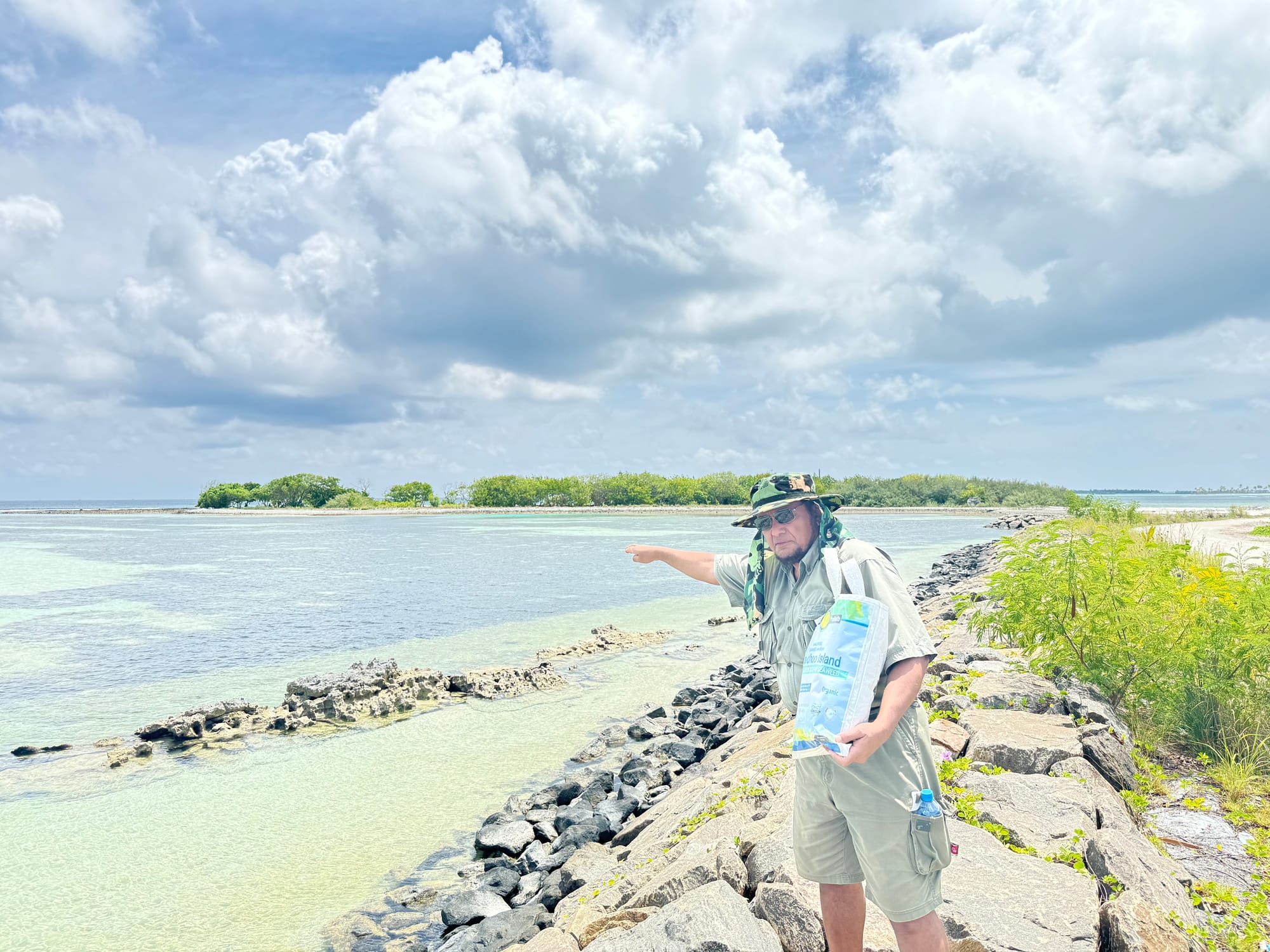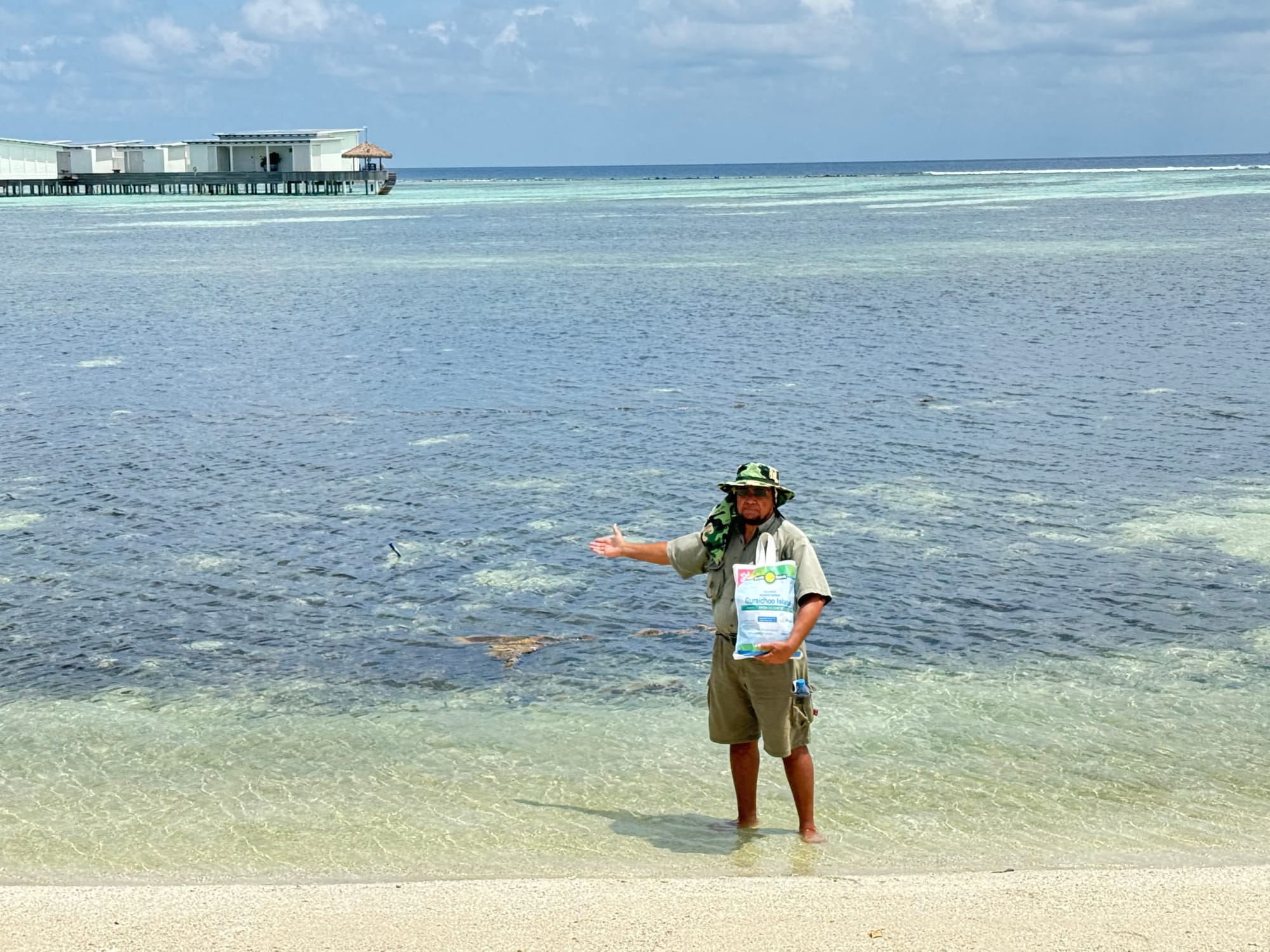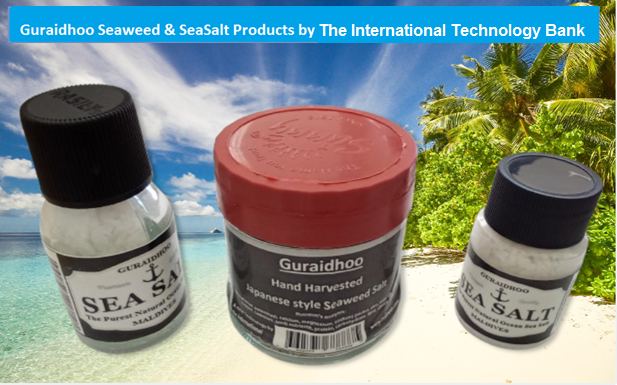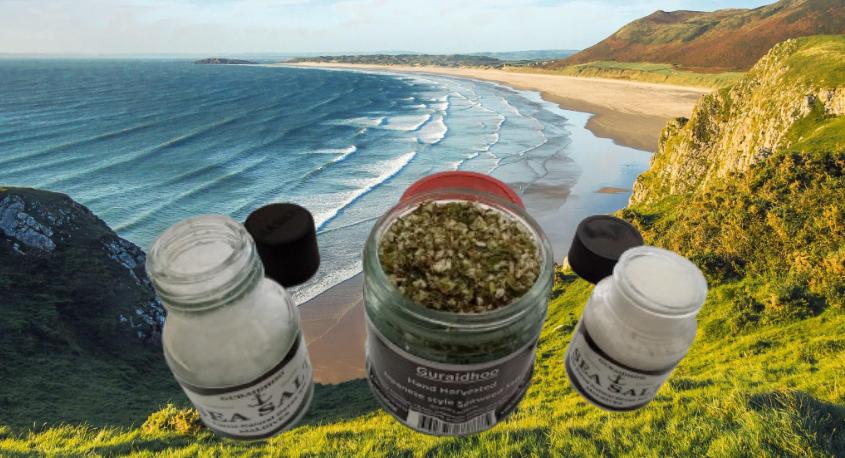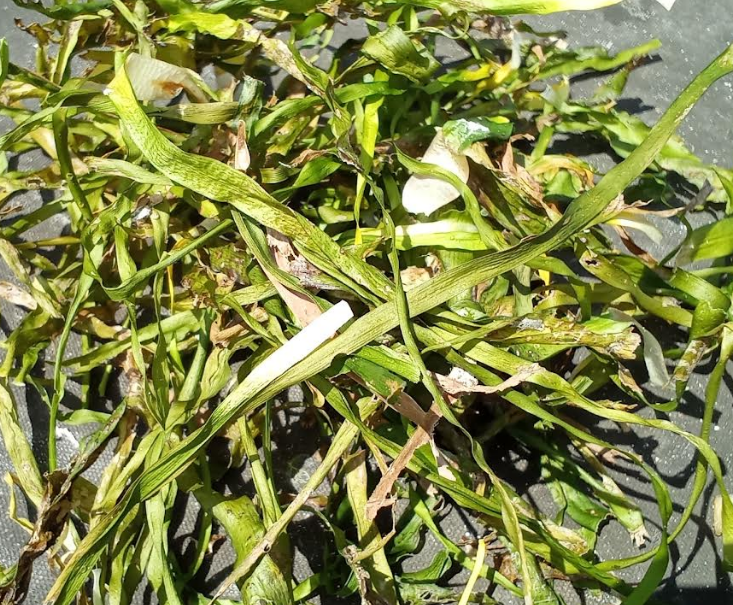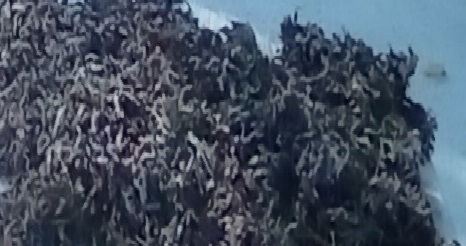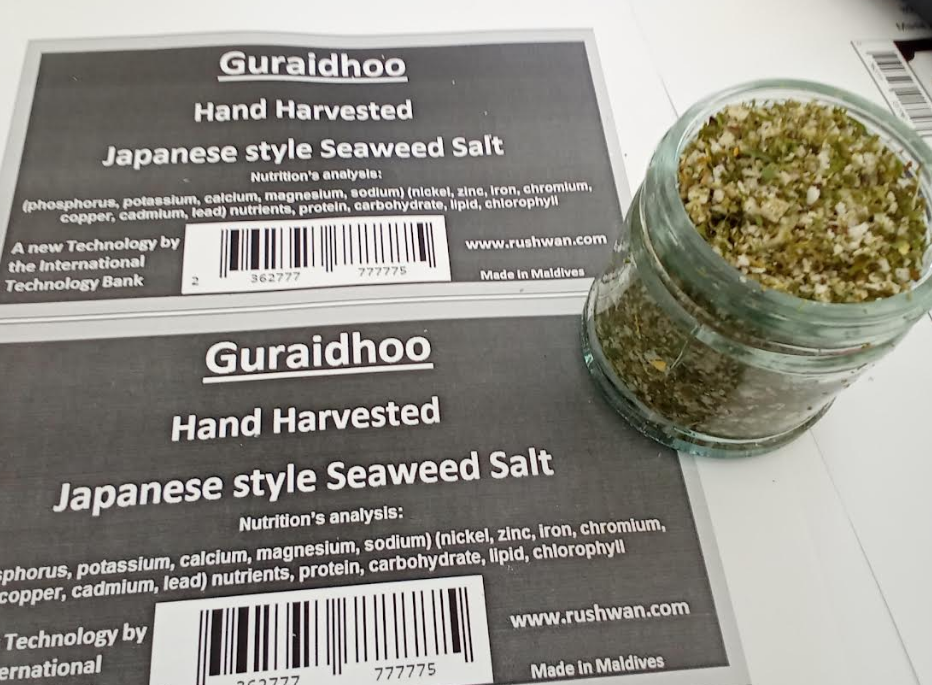Maldives Sustainable Projects
Harnessing Nature's Bounty from the Ocean
Contact us for any suspicious requests:
e@rushwan.com
The International Technology Bank – Canada www.rushwan.com
All Natural products is this page have been Manufactured genuinely from the Maldives ocean water and shore from scratch and all projects been started from 0 budget as per Professor Hamed’s courses on Amazon.com
Products & Services

Nutritional Analysis
Comprehensive analysis of essential minerals and nutrients present in our products, including phosphorus, potassium, calcium, magnesium, and more.

Culinary Creations
Explore the rich flavors of sea salt and seaweed in soap, noodles, and various famous culinary dishes, elevating every kitchen experience.

Digestive Health
Promote gut health and support digestion with our fiber-rich seaweed enhanced products, helping to alleviate bloating and constipation.

Natural Products Manufacturing
Manufacturing genuinely all-natural products from the Maldives ocean water and shore using a 0 budget approach as per Professor Hamed’s courses on Amazon.com. Offering nutrition analysis and products for culinary use.

Sea Salt with Seaweed
Offering sea salt with seaweed, a nutrient-rich blend for enhancing flavor, improving digestion, and providing essential minerals such as iodine, magnesium, and calcium for maintaining optimal health.

Sea Salt with Seaweed
Offering sea salt with seaweed, a nutrient-rich blend for enhancing flavor, improving digestion, and providing essential minerals such as iodine, magnesium, and calcium for maintaining optimal health.

Nutrition Analysis Service
Explore the nutritional content, including phosphorus, potassium, calcium, magnesium, sodium, nickel, zinc, iron, chromium, copper, cadmium, lead, protein, carbohydrate, lipid, and chlorophyll, for soap, noodles, and various culinary dishes.
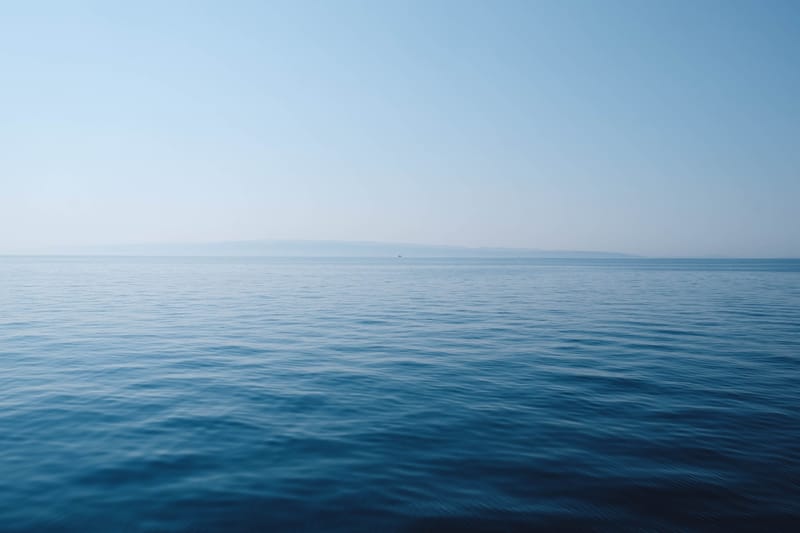
Sea Salt with Seaweed Product
Discover the benefits of sea salt with seaweed, a nutrient-rich blend rich in essential minerals like iodine, magnesium, and calcium, offering enhanced flavor and improved digestion for a satisfying culinary experience.
https://www.amazon.com/Essential-Strategies-Technopreneurs-Survival-Technology-ebook/dp/B00TMAVOM2
His major Intellectual was his Ph.D. Theses Case studies with 7 years of continuous Developments and 1M$ of research expenditures, the title was "Research & Development Techniques, A thesis Case Studies" ISBN 0-9737536-1-7. Containing 7 deferent know-how for businesses and how to extract new technology and new products. The price tag was $20,000 per copy including the Know-how license, it’s obvious, and the title was for a special discriminative Audience.
Halal seaweed capsules offer numerous health benefits due to their natural, pure, and organic properties. Hand harvested from pristine ocean waters, these capsules are an easy-to-use dietary supplement rich in essential nutrients like vitamins, minerals, and antioxidants. Consuming seaweed capsules can support overall well-being by boosting immunity, aiding digestion, and promoting healthy skin and hair. As a halal product, it adheres to strict dietary guidelines, making it suitable for individuals following a halal lifestyle. Experience the goodness of seaweed in a convenient and reliable form with halal seaweed capsules - a wholesome addition to your daily health regimen.
vitamins A, C, E, and K, along with folate, zinc, sodium, calcium, and magnesium. Hand-harvested from unpolluted waters, these capsules encapsulate the best that nature has to offer, ensuring that users receive a supplement free from harmful additives or chemicals.
- 0 pollution contrary of nuclear pollution around japan and micro plastic around china, Europe, and Americas
- Organic Production as no pesticide in the Area and NO artificial fertilizers
- Hand-picked and harvested seaweed by highly professionals
- Nutrition’s analysis:
- (phosphorus, potassium, calcium, magnesium, sodium) (nickel, zinc, iron, chromium, copper, cadmium, lead) nutrients, protein, carbohydrate, lipid, chlorophyll
- For Soap, noodles, and all famous culinary dishes in every kitchen
Introduction:
In recent years, there has been a growing trend towards using natural and wholesome products in our daily lives. One such product that is gaining popularity is sea salt with seaweed. This unique blend offers a wide range of benefits for your health and well-being. In this article, we will explore the various advantages of incorporating sea salt with seaweed into your diet. Let's dive in!
Benefit from us
Nutritional Analysis
Comprehensive analysis of essential minerals and nutrients present in our products, including phosphorus, potassium, calcium, magnesium, and more.
Culinary Creations
Explore the rich flavors of sea salt and seaweed in soap, noodles, and various famous culinary dishes, elevating every kitchen experience.
Digestive Health
Promote gut health and support digestion with our fiber-rich seaweed enhanced products, helping to alleviate bloating and constipation.
Natural Products Manufacturing
Manufacturing genuinely all-natural products from the Maldives ocean water and shore using a 0 budget approach as per Professor Hamed’s courses on Amazon.com. Offering nutrition analysis and products for culinary use.
Sea Salt with Seaweed
Offering sea salt with seaweed, a nutrient-rich blend for enhancing flavor, improving digestion, and providing essential minerals such as iodine, magnesium, and calcium for maintaining optimal health.
Sea Salt with Seaweed
Offering sea salt with seaweed, a nutrient-rich blend for enhancing flavor, improving digestion, and providing essential minerals such as iodine, magnesium, and calcium for maintaining optimal health.
Nutrition Analysis Service
Explore the nutritional content, including phosphorus, potassium, calcium, magnesium, sodium, nickel, zinc, iron, chromium, copper, cadmium, lead, protein, carbohydrate, lipid, and chlorophyll, for soap, noodles, and various culinary dishes.
Sea Salt with Seaweed Product
Discover the benefits of sea salt with seaweed, a nutrient-rich blend rich in essential minerals like iodine, magnesium, and calcium, offering enhanced flavor and improved digestion for a satisfying culinary experience.
Benefits of Sea Salt with Seaweed:1. Rich in Nutrients: Sea salt with seaweed is a nutrient-dense
Benefits of Sea Salt with Seaweed: Rich in Nutrients: Sea salt with seaweed is a nutrient-dense combination that provides essential minerals such as iodine, magnesium, and calcium. These minerals are crucial for maintaining optimal health and can help support various bodily functions. Enhanced Flavor: The addition of seaweed to sea salt adds a savory and umami flavor profile to dishes. This unique taste can elevate the overall taste of your meals and provide a satisfying culinary experience. Improved Digestion: Seaweed is rich in fiber, which can aid in digestion and promote gut health. Incorporating sea salt with seaweed into your diet can help support a healthy digestive system and prevent issues such as bloating and constipation. Boosted Immunity: Seaweed is a natural source of antioxidants and vitamins that can help boost your immune system. By consuming sea salt with seaweed regularly, you can strengthen your body's defenses against illness and infections. Balanced Electrolytes: Sea salt with seaweed contains essential electrolytes that are necessary for maintaining proper hydration and muscle function. This blend can help replenish your electrolyte levels after exercise or during hot weather.
How to Use Sea Salt with Seaweed: Sprinkle over salads or soups for an added burst of flavor Use as a seasoning for seafood dishes such as grilled fish or sushi Mix into homemade dressings or marinades for a unique taste Incorporate into homemade snacks like roasted nuts or popcorn
FAQs About Sea Salt with Seaweed: Can sea salt with seaweed be used as a replacement for regular table salt? Yes, sea salt with seaweed can be used as a healthier alternative to regular table salt due to its added nutrient content. Is sea salt with seaweed suitable for those following a gluten-free diet? Yes, sea salt with seaweed is naturally gluten-free and can be safely consumed by individuals with gluten sensitivities. Are there any potential side effects of consuming sea salt with seaweed? While sea salt with seaweed is generally safe for consumption, individuals with iodine allergies should exercise caution when using this blend.
Conclusion:
In conclusion, sea salt with seaweed is a versatile and nutritious ingredient that can enhance the flavor and health benefits of your meals. By incorporating this unique blend into your diet, you can experience improved digestion, boosted immunity, and a range of essential nutrients. So why not give sea salt with seaweed a try and unlock the many benefits it has to offer for your overall well-being?
www.rushstar.netBenefits of organic sea Salt:Sea Salt: Uses, BenefitsIntroduction:Sea salt
www.rushstar.net Benefits of organic sea Salt: Sea Salt: Uses, Benefits
Introduction:
Sea salt, a versatile ingredient derived from evaporated saltwater, has been utilized by civilizations throughout history for various purposes. From culinary applications to skincare and overall health benefits, sea salt continues to be a popular choice for many. In this article, we will explore the common uses and potential benefits of sea salt, shedding light on its versatility and advantages.
Uses of Sea Salt: Culinary Delight:
Sea salt is widely used in cooking for its unique taste and texture. It enhances the flavor of dishes and can be used both during cooking and as a finishing touch. Sprinkling a pinch of sea salt on a freshly grilled steak or salad can elevate the overall taste experience. Skincare Regimen:
Sea salt is often a key ingredient in various skincare products such as body scrubs and bath soaks. Its exfoliating properties help to remove dead skin cells, leaving the skin feeling soft and rejuvenated. A sea salt bath can also help to relax muscles and improve circulation. Health Benefits:
While there is limited scientific research on the specific health benefits of sea salt compared to other types of salt, some people believe that it may offer advantages such as improved mineral intake and electrolyte balance. However, it is important to consume all types of salt in moderation to maintain healthy sodium levels.
Potential Benefits of Sea Salt: Rich in Minerals:
Sea salt is known to contain a variety of minerals such as magnesium, calcium, and potassium, which are essential for overall health and wellbeing. These minerals can help to support nerve function, muscle contraction, and fluid balance in the body. Hydration and Electrolyte Balance:
Consuming sea salt in moderation can help to replenish electrolytes lost through sweat during physical activity. It can also aid in improving hydration levels by ensuring a proper balance of fluids within the body. Skin Health:
The exfoliating properties of sea salt make it a popular choice for skincare routines. Regularly incorporating sea salt scrubs can help to unclog pores, reduce inflammation, and promote a healthy glow.
In conclusion, sea salt offers a wide range of uses and potential benefits, from enhancing the flavor of dishes to promoting skincare and overall health. While more research is needed to fully understand its advantages, incorporating sea salt into your daily routine in moderation can contribute to a well-rounded lifestyle.
Meta-description: Discover the uses and benefits of sea salt in cooking, skincare, and health. Learn why sea salt is a popular choice for many households worldwide.
Title: Unveiling the Magic of Sea Salt: Uses and Benefits
Main Keyword (H2): Sea Salt: Uses, Benefits
Remember, Making significant changes to your diet or skincare routine. Enjoy the benefits of sea salt in moderation and discover the wonders it can bring to your daily life.
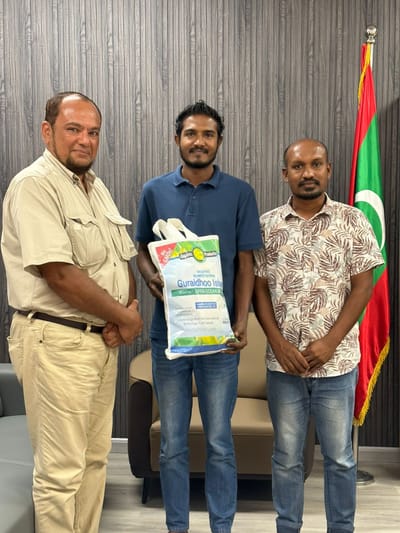
RushStar Seaweed Production Malti levels and phases of see weed professional hand harvesting An Official Meeting with the Honorable the President of Guraidhoo Island - Maldives Professional Maldives Business Proposal By Prof. Hamed Mohamed – Mr. Ahmed Hamdhaan Maldives Sustainable Corporation – Maldives Seaweed cultivation, production, all related manufacturing for fertilizer, cattle feed to reduce methane, Fish feed, Seaweed extracts & UV oil for cosmetics. Sea Salt Cultivation fields and Processing operation Sustainable Seaweed & Sea salt Production in the Maldives / K. Guraidhoo 1. Introduction 1.1. Background of Seaweed Production 2. Importance of Seaweed Production 2.1. Economic Benefits 2.2. Environmental Benefits 3. Challenges in Seaweed Production 3.1. Climate Change Impact 4. Sustainable Practices in Seaweed Farming 4.1. Integrated Multi-Trophic Aquaculture 5. Future Prospects and Recommendations Sustainable Seaweed Production in the Maldives Introduction 1. Introduction to Seaweed Seaweeds are a group of benthic marine algae that are classified into three different phyla: the Rhodophyta, Phaeophyta, and Chlorophyta. Although seaweeds represent a relatively small component of the marine flora in terms of the number of species, they are an extremely important biological resource that has been used by humans for many centuries.
RushStar Seaweed Production
Introduction1. Introduction to SeaweedSeaweeds are a group of benthic marine algae that are classified into three different phyla: the Rhodophyta, Phaeophyta, and Chlorophyta. Although seaweeds represent a relatively small component of the marine flora in terms of the number of species, they are an extremely important biological resource that has been used by humans for many centuries. This importance arises from the fact that seaweeds are extremophiles that have adapted to colonize harsh marine environments, by being able to endure exposure to air at low tide, exposure to intense sunlight in shallow water, and variations in temperature, salinity, and nutrient supply. To survive these extreme environmental conditions, seaweeds have developed unique morphophysiological characteristics associated with their pigments, mucilages, and cell walls.In addition to tolerating these extreme conditions, seaweeds also provide a wide range of important ecosystem services, such as providing essential principles for complex marine food webs, producing oxygen, and influencing ecological processes such as nutrient cycling and sediment stability. They have many different uses in terms of human food, animal feed, pharmaceuticals, cosmetics, and nutrient bioextraction. Furthermore, the cultivation of seaweeds does not significantly alter the environment in which they grow and can even mitigate variables such as ocean acidification and eutrophication. Consequently, the international interest and investment in seaweed aquaculture has increased significantly in recent years and has become the fastest growing sector in global aquaculture. This chapter aims to provide an overview of how the cultivation of farmed seaweeds is practiced around the world.
1.1. Definition and TypesThe word "seaweed" is a common name for a general group of marine macroalgae, within which are several individual species. They are mostly marine in distribution and occupy a variety of ecological niches. They occur in the intertidal zone, through the continental shelf to deep water, with most species found in shallow marine habitats. Seaweed comprises several species, including brown algae, red algae, and green algae. They are largely abundant along coastal regions and function as "ecological engineers" with respect to the habitats they create. Seaweeds constitute a valuable group of plants that perform numerous crucial roles in ecosystems. These include promoting nutrient cycling, serving as habitats or food for intertidal marsh plants, providing habitat to many animals, diverting forces of wind and water, maintaining surface elevation and physical stability, and offering an attractive site for tourists. In addition to their ecological value, seaweeds are an economical driving force in many traditional societies, as they can be utilized in many ways.
Seaweed is cultivated on an industrial scale in many countries, including China, the Philippines, and Japan. In recent years, the importance of seaweed as a resource has been rapidly increasing, and currently, more than 18 million wet tons of seaweed are produced annually. As the global demand for seaweed increases, especially for products such as agar, alginates, and carrageenan, there has been a significant increase in the number of countries involved in the seaweed aquaculture industry. Seaweed farming can help increase the livelihoods of those living off the land and contribute to the environment by restoring lost seagrass beds, as these seagrass beds can be removed by nutrient pollution. Seaweed plays an important ecological role by being responsible for nutrient removal. Semibiotically associated with mangroves and seagrasses, the quentharium zone level of the tidal cycle provides suitable growing conditions for mangroves, which in return supply the necessary protection for the fragile seaweed beds. As per Prof. Hamed Amazon Courses, visiting and living within the project environment is one of the keys success
The Maldives is a small island nation located in the Indian Ocean. With a population of around 350,000, an unemployment rate of 25%, and a very limited natural resource base, the livelihood of many islanders is largely dependent on fishery-related activities. The overall objective of this study was to identify a sustainable method of seaweed cultivation in the Maldives that can generate increased value chains for small-scale farmers. It is believed that the results of this study will also provide social, economic, and environmental benefits not only for the people of the Maldives but for people of the small island developing states that feel they could benefit from these results. The primary objective was to develop quantitative data on trends and patterns of seaweed production. The secondary objective emerged from the initial data collection that identified different farming technologies and methods being used to grow seaweed. Central to understanding why these differences manifested involved assessing the socio-economic conditions of the island communities, the different species-type considerations, the water quality and bottom substrate, the annual and daily growth patterns, and the system design, sizing, and siting.1.1. Background of Seaweed ProductionThe Maldives is a low-lying archipelago of coral islands located in the Indian Ocean to the southwest of Sri Lanka. As the seventh smallest country in Asia, the Maldives stretches 820 km in a north-south direction and 120 km in an east-west direction. The country consists of 26 atolls and 1,192 coral islands, of which 187 are inhabited. The Maldives has a population of about 394,451 people, whose livelihoods depend primarily on tourism, fishing, and agriculture. Aligning sustainable development with population requirements, Maldivians continue to innovate and find uses for the resources they have. Aquaculture has been identified as one of the priorities to be developed, in particular through seaweed farming.The Maldives is situated in the Indian Ocean off the southern tip of India, approximately 700 km southwest of Sri Lanka. Trace elements of seaweed material have been found in seventh-century archaeological sites, supporting the belief that seaweed was a subsistence food in ancient Maldives, offering yet another example of the Maldivians' continued utilization of the benefits of the sea. Seaweed farming has been practiced in the Maldives for nearly two decades; cultivation of Thalassia hemprichii is estimated to have been practiced for at least 300 years. Seaweeds are either grown in shallow waters or attached to lagoons. Residents of certain islands are known to collect seaweeds from lagoons on a wild and irregular basis for traditional and/or medicinal uses, while previously only farmed seaweed was collected and processed in the southern atolls. Seaweed harvesting can be practiced year-round, while the product can be stored and processed into various commercial and traditional products for sale, export, or personal use.
Overview of Seaweed CultivationSeaweed culture in the Maldives is synonymous with coral stone mounds in shallow lagoons – a seemingly futile act during the calm weather reminiscent of the Maldivian bread-and-butter – fishing, but not really fruitless when compared to the sometimes cautious outcome of fishing. With the advent of cultured pearls, seaweed has been dubbed the “green pearl” of the sea and has impelled in an everlasting gust the curiosity of many who dreamt of wealth. The culture of seaweed on coral stone mounds has provided the rural inhabitants of the Maldives with a significant economic benefit, which is supplemented by a minimal existence that could easily be obtained through fishing, but without the punctual regularity of their customary daily fish curry. For this reason, the physical exertion involved in caring for the relatively low-yielding cultivated seaweed more often than not goes unnoticed, except, of course, during the harvesting season, when the farmer could honestly account for an amount large enough to pay the rent for his house and tenement land, and still have some to spare either for the jeweler, to whom he wished to extend his day-to-day materials for exchange, or for the essentials of importable luxury; tea exchange, like their land-based pleasure.Prof. Hamed and Mr. Ahmed of Maldives Sustainable Corporation already checked the cultivation capability and produced the first ever Maldieves Seaweed organic fertilizer every manufactured in Maldives
Prof. Hamed offered on Sea Level solution with 0 Budget, and carrying the successful results in his hand.
Analyzing the Seaweed Industry in the Maldives: Employment Opportunities, Export Revenue Generation, and Diversification of Income Sources1. IntroductionThe literature surrounding the seaweed industry emphasizes its potential as a sustainable and economically viable sector, particularly in coastal regions. The work by Eggertsen and Halling (Eggertsen and Halling, 2021) highlights the promise of eucheumatoid seaweed farming as a crucial livelihood option in tropical coastal areas. They point out that, while seaweed farming generally has a lower environmental impact than other aquaculture practices, there are significant knowledge gaps regarding the environmental effects of non-native haplotypes and the management of farming activities. Their recommendations for sustainable practices, including spatial planning and the cultivation of native haplotypes, underscore the need for careful management to mitigate potential negative impacts while capitalizing on the growing global demand for marine foods.Building on this foundation, Ahmed et al. (Uddin Ahmed et al., 2022) explore the socio-economic dimensions of seaweed farming in Bangladesh, presenting it as a viable option for enhancing the livelihoods of coastal communities. Their findings indicate that seaweed farming can significantly improve the economic conditions of local populations, particularly for women. However, they also identify a critical barrier: the lack of a robust value chain, which hampers the growth of the industry. Their study highlights the importance of developing an effective value chain to ensure the sustainable development of the seaweed sector, which is integral to promoting a blue economy in coastal regions.Further expanding on the socio-economic benefits of seaweed farming, Healy et al. (E. Healy et al., 2023) discuss the unique advantages of seaweed aquaculture, particularly its low input requirements, making it accessible to poorer communities. Their research reveals that seaweed farming can replace traditional livelihoods such as fishing and subsistence farming, leading to improved economic conditions and retention of youth in rural areas. Additionally, they emphasize the importance of value addition through processing, which can enhance income stability and expand market reach. The success of the Philippines in developing a complete value chain for carrageenan production serves as a model for other regions seeking to maximize the economic benefits of seaweed farming.Together, these articles illustrate the multifaceted benefits of the seaweed industry, from environmental sustainability to socio-economic empowerment, while also highlighting the challenges that must be addressed to fully realize its potential. The insights provided by these studies lay a critical foundation for understanding the complexities of the seaweed industry and its implications for employment opportunities, export revenue, and diversification of income sources in regions like the Maldives.
Environmental Benefits of Seaweed Cultivation in Maldives1. Introduction2. Seaweed Cultivation and its Importance in Maldives2.1. Overview of Seaweed Cultivation2.2. Economic Significance of Seaweed Cultivation3. Environmental Benefits of Seaweed Cultivation3.1. Carbon Sequestration and Climate Change Mitigation3.2. Water Quality Improvement4. Challenges and Opportunities for Seaweed Cultivation in Maldives5. Conclusion and Future DirectionsThe seaweed industry worldwide is growing by leaps and bounds and is one of the fastest-growing aquaculture sub-sectors. This is largely attributable to its low investment requirements, high employment potential, minimal environmental impact, and the growing interest shown by multinational consumers in the benefits of dietary seaweed-based products. The industry generates nearly US$6 billion every year, and roughly 25 million people in 60 developed, developing, and least developed countries adopt it as either a subsistence occupation or a commercial economic activity. Although seaweed production by cultivated methods occurs only in specific areas of the world, the industry is land-based. However, environmentally, the Maldives is in a unique position to reap greater benefits from seaweed cultivation, as it has the necessary natural resources that other countries, particularly in the South and the Southeast, require to cultivate seaweed, such as subtropical waters and ideal water temperatures, intensive sun, and low levels of nutrients including nitrates and phosphates, all of which cause pollution when concentrations are greatly increased. The country also provides exempted areas with nesting grounds for the hawksbill turtles, plus much-needed open ocean habitat for the hawksbill to mature, away from the territorial and population pressure of the islands' inhabitants and related human activities.
Exploring the Challenges and Opportunities of Seaweed Cultivation in the Maldives: An Overview of Environmental and Economic Benefits1. The exploration of seaweed cultivation in the MaldivesThe exploration of seaweed cultivation in the Maldives presents a multifaceted landscape of environmental and economic benefits, as seen through the lens of recent literature. The foundational work by (James Lunkapis and Wilkerson Danny, 2016) provides critical insights into the socio-economic dimensions of seaweed farming, particularly in Sabah, Malaysia. Their research underscores the abundance of natural seaweed along the east coast and highlights the traditional practices of local communities engaged in this sector. The authors document the Malaysian government's recognition of seaweed cultivation as a high-yield potential economic activity during the 10th Malaysia Plan (2010-2015), which led to substantial funding and support aimed at enhancing the livelihoods of coastal communities. Through qualitative methods, including interviews and field observations, they reveal the strengths and weaknesses of various implementation systems for the seaweed industry, illustrating the diverse impacts on local economies.Building upon this foundation, (Khan et al., 2024) expand the discussion by examining the innovative trends and opportunities emerging within the global seaweed sector. Their analysis emphasizes the importance of initiatives like the Global Seaweed STAR, which seeks to enhance the profitability and sustainability of seaweed farming through research on pathogens, biosecurity, and socio-economic stability. They also highlight collaborative efforts, such as the Blue Natural Capital Financing Facility, which aims to bolster competitiveness in seaweed cultivation, particularly in developing nations. The authors present a forward-looking perspective by detailing large-scale projects, such as the Algae Demo project in Europe and a proposed cultivation initiative off the Omani coast, indicating a broader movement towards industrialization and commercialization of seaweed farming.Together, these articles illustrate a dynamic interplay between local practices and global initiatives in seaweed cultivation, revealing both the challenges and opportunities that lie ahead for coastal communities, including those in the Maldives. The critical evaluation of these works sets the stage for a comprehensive understanding of how seaweed farming can be leveraged to foster economic growth while addressing environmental concerns.Challenges and Opportunities for Seaweed Cultivation in Maldives:Seaweed cultivation in Maldives faces challenges such as limited infrastructure, lack of technical expertise, and vulnerability to climate change impacts. However, there are also significant opportunities for the industry to thrive in the region. The nutrient-rich waters of the Maldives provide an ideal environment for seaweed growth, offering a sustainable and eco-friendly source of income for local communities. By investing in research and development, promoting sustainable farming practices, and establishing market linkages, the Maldives can unlock the full potential of seaweed cultivation and contribute to economic growth and food security in the region. With the right support and strategic planning, seaweed cultivation could become a thriving industry in the Maldives, benefiting both the environment and local communities.
Seaweed cultivation holds significant economic importance due to its various commercial applications. Seaweeds are used in food production, pharmaceuticals, cosmetics, and even as biofuels. They are a sustainable source of valuable compounds like agar, carrageenan, and alginate, which are widely used in various industries.The cultivation of seaweed also provides employment opportunities in coastal communities, boosting local economies and reducing pressure on wild seaweed populations. Furthermore, seaweed cultivation plays a crucial role in mitigating climate change by absorbing carbon dioxide from the atmosphere and reducing ocean acidification.
Carbon Sequestration and Climate Change Mitigation
Carbon sequestration is the process of capturing and storing carbon dioxide from the atmosphere to mitigate climate change. By removing carbon dioxide, a greenhouse gas, from the atmosphere, carbon sequestration helps reduce the impact of global warming and climate change. There are various methods of carbon sequestration, including afforestation, reforestation, soil carbon sequestration, and carbon capture and storage technologies. These methods play a crucial role in offsetting carbon emissions and achieving greenhouse gas reduction targets. Through effective carbon sequestration efforts, we can contribute to a more sustainable and resilient future for our planet by mitigating the harmful effects of climate change.
Water Quality Improvement after seaweed cultivationSeaweed cultivation has been shown to have a positive impact on water quality. As seaweeds grow, they absorb excess nutrients such as nitrogen and phosphorus from the water, reducing the presence of harmful algae blooms. These nutrients are essential for seaweed growth, making seaweed cultivation a natural and sustainable solution for improving water quality. Additionally, seaweed cultivation helps to oxygenate the water and provide habitat for marine life, further enhancing the overall health of the aquatic ecosystem. Overall, the practice of seaweed cultivation not only benefits the environment but also contributes to cleaner and healthier waterways.
Sustainable Practices in Seaweed Farming
Sustainable practices in seaweed farming are essential for preserving marine ecosystems and supporting local communities. By implementing techniques such as integrated multitrophic aquaculture, seaweed farmers can minimize environmental impact and promote biodiversity. Utilizing organic fertilizers, monitoring water quality, and practicing responsible harvesting are key aspects of sustainable seaweed farming. Additionally, engaging with stakeholders and investing in research can help improve farming methods and ensure long-term viability. By prioritizing sustainability, seaweed farmers can contribute to a healthier marine environment and create a more resilient industry for the future.
A Simple project by Prof. RushwanThe International Technology Bank www.rushwan.comwww.rushstar.net
Testimonials
Contact
- Maldives
- e@rushwan.com
- Sun-Thurs - 08:00-19:00
Maldives Sustainable Wise Natural Recourses Projects Contact us e@rushwan.com The International Technology Bank – Canada www.rushwan.com All Natural products is this page have been Manufactured genuinely from the Maldives ocean water and shore from scratch and all projects been started from 0 bu
